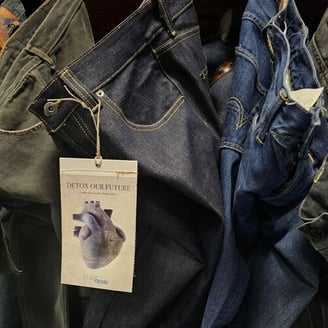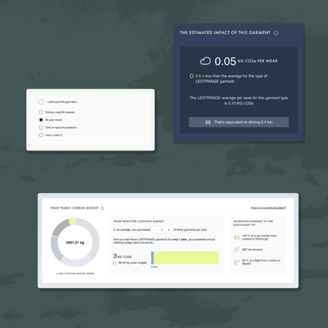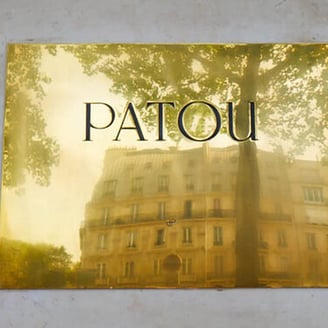The metaverse: the virtual revolution that won't happen?
In October 2021, Mark Zuckerberg announced the advent of the metaverse, and even renamed the Facebook group Meta. Fashion brands and luxury houses were quick to announce collections, flagships and virtual experiences in this new cyberspace born of Web3. But two years on, these virtual worlds are home to a very small population, while their virtual property market is collapsing. NFTs, the virtual objects, clothes and works of art that were supposed to be the consumer goods of these universes, are already worthless, raising the question of the presence of brands in what seems doomed to remain a niche market.

It's symbolic: on September 27, 2023, Meta organised its MetaConnect conference, dedicated to announcements linked to the virtual universe. At Meta's Californian headquarters, a large crowd turned out to listen to Mark Zuckerberg. But in the virtual amphitheatre broadcasting the conference in Horizon Worlds, Meta's metaverse, only around twenty avatars squeezed in to listen to the CEO. A leader who has himself turned away from the metaverse.
After his metaverse division Reality Labs racked up losses of $24 million (€22 million) in 2021 and 2022, the Facebook boss is said to have turned his attention to artificial intelligence. This shift, which took place at the beginning of the year, coincided with the rise in popularity of Chat-GPT among the general public. "We are creating a new high-level product group at Meta focused on generative AI", he announced back in February. And Meta is not an isolated case. Another telling example is the giant Disney, which in February closed its metaverse department, abandoning promising virtual universe projects dedicated to its Disney, Pixar, Star Wars and Marvel licences.
The fashion and luxury sector had also done its utmost not to miss out on the metaverse. Brands have had so much trouble catching up digitally, with e-commerce, that there was a determination not to get caught out again," our client brands tell us," Michael Jais, CEO and founder of Launchmetrics, tells FashionNetwork.com. "The installation of dedicated digital teams has also meant that the sector is now keeping a closer eye on the tools that are emerging."
Such was the enthusiasm of brands for the metaverse that the virtual world Decentraland organised the first Metaverse Fashion Week in February 2022. The list of participants included prestigious names like Dolce&Gabbana, Puma, Etro, Tommy Hilfiger, Philippe Plein, Karl Lagerfeld, Cavalli, IKKS, Selfridges and others. An event that will perhaps go down in history as the peak of the fashion metaverse.

LVMH, like Alibaba, had also invested in a virtual ambassador dedicated to the metaverse, who will appear alongside Bernard Arnault in Paris at Viva Tech 2022. Other names such as Zara, Mango, Lacoste, L'Oréal, Adidas, Prada, Forever 21 and Balenciaga have also been quick to publicise their virtual initiatives, not least because of the press coverage generated in the midst of 'metaversmania'.
The virtual empty diagonal
Since then, it has to be said that the metaverse has not seen the hoped-for acceleration. One ruthless indicator of this is virtual property. Individuals and brands can buy land in these virtual universes to house their community in an experiential space built in their image. At the beginning of 2022, you had to pay the equivalent of 37,230 dollars for a plot of land in Decentraland, and 35,000 dollars in The Sandbox.
Whatever the price for brands, some of them are determined to appropriate the most exposed addresses on the virtual avenues, or to ensure their presence in "districts" dedicated to fashion and luxury. However, these virtual properties have seen their prices plummet, plummeting in spring 2023 to $1,250 per plot in Decentraland and $916 in The Sandbox... And since the start of the year, prices have continued to fall by 83%.
Behind this fall in prices lies a demographic decline that was identified as long ago as a year ago by the specialist site DappRadar. Over a 24-hour period, it calculated that Decentraland and The Sandbox (each valued at over a billion dollars at the time) had only attracted 38 and 522 active users respectively. These figures should be taken lightly: they only concern users who have carried out a virtual transaction, and not those who have logged on simply to interact with other users or the environment.

The deception is no less real for the companies that have invested in the site: the same calculation method estimates that Decentraland and The Sandbox have never exceeded 675 and 4,503 active users respectively. While the two metaverses attacked the calculation method, their defence paradoxically did more damage: Decentraland's creative director Sam Hamilton claimed an average of 8,000 users per day to save his metaverse's honour.
The only exception is the Roblox metaverse. This one stands out by offering users the chance to easily create their own video games on site. In the second quarter of 2023, it claimed 65.5 million daily users. An example that would tend to prove that a clear and defined offer is capable of attracting crowds to the metaverse. And, in the case of Roblox, particularly young people, to whom this playful universe opens a marketing door for brands. "The only limitation is that we're talking about tribes of gamers and Gen-Zs with a lower level of fashion/luxury knowledge than other consumers", moderates Michael Jais. "It will therefore be difficult in Roblox to nurture an appeal for anything other than well-known brands, or for anything other than well-established iconic products."
While brands and luxury houses remain publicly enthusiastic about the metaverse, they are however more open off record. "We lost 2 million euros in this affair, but at least we were able to experiment," say the directors of a house that wanted to be a forerunner in these virtual universes. At the time, they played down the sums invested. "It's like a mountain giving birth to a mouse," says the head of innovation at a French brand. "The people who praised these projects internally, not always out of conviction but sometimes out of fear that their brand had missed the boat, continue to explain that it was better to give it a go rather than be seen as a follower, should the metaverse become the new social network.
The NFT bubble has burst
At a time when the metaverse was still being presented as a great upheaval to come, Bloomberg Intelligence estimated that these virtual worlds would be valued at 800 billion euros by 2024. A potential growth driver that attracted the covetousness of companies affected by the health crisis. Today, in the face of what some are already describing as virtual ghost towns, the question arises as to what will become of NFTs, or "non-fungible tokens" corresponding to a virtual product or place, which can be the subject of online transactions.

NFTs can thus correspond to clothing developed by fashion and luxury brands to dress avatars travelling through the metaverse. This is a potential market that has seen the emergence of purely virtual brands specialising in design for cyberspace, or service providers offering physical brands to manage the development of their virtual offering.
At the end of September 2023, the DappGambl website, which specialises in crypto-currencies (which are themselves nothing more than NFT currencies), published a striking study of "NFT collections". In 2021, at the height of speculation about the inevitable explosion of the metaverse, these digital works and products were sometimes trading at a premium. Today, 95% of those who invested own worthless tokens, or around 23 million consumers. This is based on the 73,257 NFTs observed, 69,795 of which are said to be worthless.
Too quick to commoditize
Over and above the value of works of art and tokenised products, the study highlights a market where unsold goods reign supreme. Of the 8,850 NFT collections observed, only 21% have seen all their NFTs find a buyer. This means that almost four-fifths of these collections have worthless tokens on their hands. "There is not enough demand to keep pace with supply," says DappGamble.

This lack of value would be less dramatic if it did not have a very real environmental cost. The 195,699 NFT collections with no apparent owner or value required energy comparable to 27.8 million kilowatt hours to be minted (the birth certificate of a token). This corresponds to the emission of 16,243 tonnes of CO2.
The rampant speculation that caused the value of some NFTs to skyrocket was also linked to the failure of the metaverse. "The image of the "cryptobro" (a derogatory nickname for aficionados of cryptocurrencies and NFTs, editor's note) created the impression of a complicated, elitist tool. It was only when interest from the general public waned that we finally saw the emergence of digital wallets that were intuitive enough to potentially attract the general public," laments the former digital manager of a major luxury house.
For Michael Jais, the lack of practicality is compounded by the absence of a clear use. "Today, innovation comes first and foremost from consumers, who were the first to take hold of social networks and now artificial intelligence," says the specialist. "But the metaverse was commoditised far too early. And brands have invested heavily even before proven free usage scenarios have emerged."
In addition to brands, tech companies themselves are now turning their backs on the metaverse. Last April, a KPMG study of 767 tech, media and telecoms companies showed that by 2023, more than 70% of these organisations would be devoting less than 5% of their innovation budget to metaverse. The reason: the absence of clear commercial or marketing use cases in which to include them.
Many of the specialist service providers who were set up to support companies in the virtual world are now more discreet and cautious. When contacted, many no longer follow up or refuse to be quoted on the counter-performances of virtual worlds. And Meta, which until recently wanted to revolutionise meetings and presentations using avatars and virtual reality (VR) headsets, has finally put its promise on the back burner, given the complexity of what a simple videoconference can achieve.
NFTs more tools than products
The metaverse could survive as a niche market, able to reach certain young consumers, while we wait for this new format of online interaction to take off in reverse.
The future of NFTs is clearer, as tokens continue to move towards a future that is more utilitarian than artistic. Their non-duplicable and secure nature has positioned them from the outset as a certification tool to be taken seriously, whether for traceability in supply chains, authentication of finished products in the second-hand market, or personalised marketing targeting fashion and luxury goods customers.

In Europe, the Digital Product Passport (or "DPP") project is opening the door to a fashion market in which each item would have a digital identity card in the form of an NFT. "A pair of sneakers associated with a token, its digital twin, could, for example, if I so chose, be visible on a platform, where people could then make me offers," explained Joël Hazan, associate director at Boston Consulting Group, in April. "This can create a huge number of offers."
But we shouldn't bury the metaverse too quickly, according to some of the professionals we interviewed, who point to the possibility of late adoption by users, particularly through the contributions of artificial intelligence, which the general public has been quick to adopt. According to Michael Jais, "AI could soon feed these virtual experiences, enrich the possibilities for interaction, and lead to the emergence of new uses and practices."
An opinion shared by Renzo Rosso, chairman of OTB, owner of Diesel, Jil Sander, Margiela. "Personally, I still believe in the metaverse, in particular for the possibility it offers of entering an unreal world and being able to be anyone by interacting with others and with the possibility of expressing oneself."
However, this is not enough to save brands from premature investment: "It is highly unlikely that a digital wardrobe or virtual flagship designed in 2021 will satisfy expectations that will emerge in several months, or even years," resigns a digital manager from a clothing group. While the metaverse may not have sunk once and for all, brands' past investments seem doomed to the digital abyss.
Copyright © 2023 FashionNetwork.com All rights reserved.












